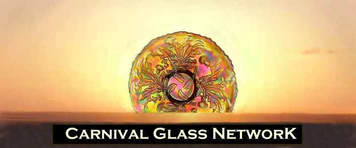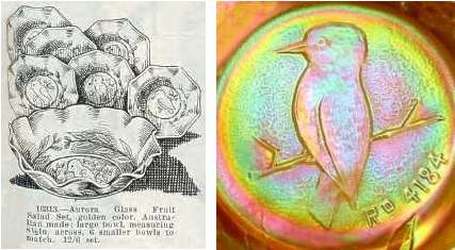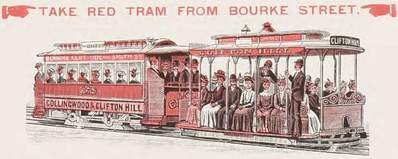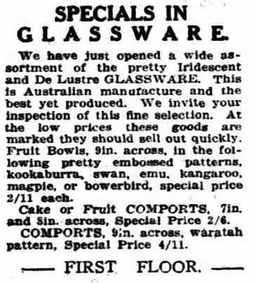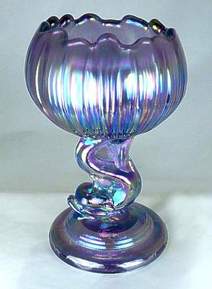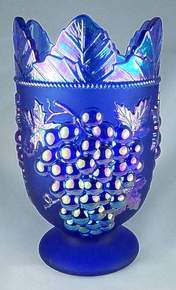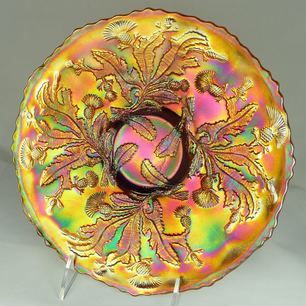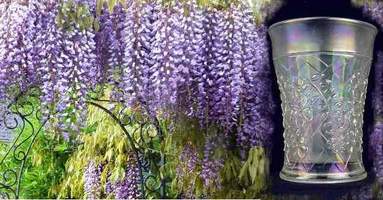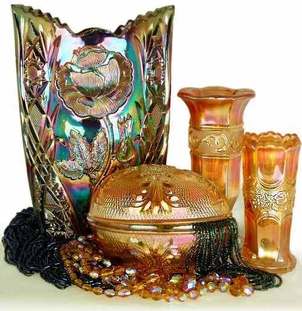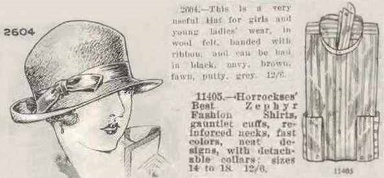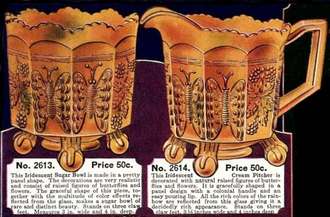NetworK ezine Issue 1. June 2015
by Glen and Stephen Thistlewood
Welcome to the return of Carnival Glass NetworK, our successful, International journal that broke new ground back in the 1990s. Now in 2015 we are launching our new and FREE ezine (an electronic magazine), featuring our cutting-edge research, discoveries and in-depth news and views all devoted to Carnival Glass around the world.
In Carnival Glass Network we will bring to you the breaking news of our latest research investigations and fact-finding – with live links to the full, feature length articles and illustrations on our website, Carnival Glass Worldwide, so that you can read them at your leisure. And you can file away your NetworK ezines so you will always have a reference to the articles, as well as extra background information that isn’t on our website.
Mail Order - Aussie Style!
In Carnival Glass Network we will bring to you the breaking news of our latest research investigations and fact-finding – with live links to the full, feature length articles and illustrations on our website, Carnival Glass Worldwide, so that you can read them at your leisure. And you can file away your NetworK ezines so you will always have a reference to the articles, as well as extra background information that isn’t on our website.
Mail Order - Aussie Style!
In this first issue of our Carnival Glass NetworK ezine, we bring you the breaking news of our research into Mail Order catalogues in Australia. No, not the stuff you can order today (although we’d like to order a case of Aussie Shiraz … chuckle), this is Mail Order back in the 1920s.
When we think of Mail Order catalogues featuring Carnival Glass we picture Sears or Butler Brothers in the USA. The first surprise then, was finding an Australian Mail Order catalogue from the 1920s from Foy & Gibson. The second big surprise was finding that the catalogue included Carnival Glass, and as far as we know, this is being shown for the first time!
On offer was Item 16313: "Aurora Glass. Fruit Salad Set, golden colour, Australian made: large bowl, measuring 8½in. across, 6 smaller bowls to match. 12/6 set." Yes, Crown Crystal's Kingfisher pattern in "golden” glass (marigold Carnival) - an extract from the catalogue is shown below, left, and alongside it, a detail of the wonderful Kingfisher design.
How much was 12/6d (twelve shillings and sixpence, Australian) worth back in 1924? We will add some thoughts about it at the end of this Issue.
When we think of Mail Order catalogues featuring Carnival Glass we picture Sears or Butler Brothers in the USA. The first surprise then, was finding an Australian Mail Order catalogue from the 1920s from Foy & Gibson. The second big surprise was finding that the catalogue included Carnival Glass, and as far as we know, this is being shown for the first time!
On offer was Item 16313: "Aurora Glass. Fruit Salad Set, golden colour, Australian made: large bowl, measuring 8½in. across, 6 smaller bowls to match. 12/6 set." Yes, Crown Crystal's Kingfisher pattern in "golden” glass (marigold Carnival) - an extract from the catalogue is shown below, left, and alongside it, a detail of the wonderful Kingfisher design.
How much was 12/6d (twelve shillings and sixpence, Australian) worth back in 1924? We will add some thoughts about it at the end of this Issue.
|
But ... back to Foy & Gibson. What other Glass goodies do you think they offered back in the mid 1920s? The ad on the right is a pretty good clue - yes, more Carnival Glass.
Carnival was also available in Foy & Gibson’s department store (it was on the First Floor!), and conveniently, you could get there by tram: from at least as early as 1910, customers were advised to take the "red tram from Bourke Street" to the store. Read more about Foy & Gibson (or click on the Red Tram below). |
New Northwood Art Glass
Recently, there was a bit of a "Whaaaaat?" moment over an apparently one-of-a-kind Northwood Grape and Cable "whimsey". In fact, NetworK #24 from 1999 had the story - contemporary Carnival Glass being made in the famous Northwood name. The original, Classic Carnival produced by Harry Northwood at Wheeling, West Virginia, is prized and lovingly displayed in glass collections all over the world.
A descendant of the Northwood family, David McKinley, had a mission and a dream - to design and make Carnival Glass in the Northwood name and tradition. In 1998, it became a reality; the new Northwood Art Glass Company commissioned Fenton to make their first piece, a Grape and Cable vase.
David was determined to maintain the integrity and "collectability" of Classic Northwood Carnival Glass, and he made sure that the contemporary pieces made by the new Northwood were different (in colour, shape and style) from the Classic Northwood, and all the contemporary pieces would be signed with a new script signature, Northwood.
|
Sadly, only two patterns were made, as shown on the right Dolphin Comport (the one shown is a whimsey rosebowl), and a Grape and Cable vase (made in 3 shapes). However, the result is sheer beauty, combining the artistry and design of the Northwood legacy with the superb glassmaking craftmanship of Fenton. Read the full story of the new Northwood Art Glass Company. |
Carnival Glass Plates (and our new NetworK logo)
|
The amethyst plate in our NetworK header is, of course, Fenton’s fabulous Thistle pattern, which has a special meaning for us because of our name Thistlewood. We had longed to own one since we began collecting in the 1980s.
Lady Luck shined on us two years ago when we were fortunate enough to find this beautiful example. The Thistle bowl is fairly easy to find, yet the plate in the same pattern is exceptionally hard to locate, (as is the case with a number of other patterns such as Dragon & Lotus, Imperial Grape, Vintage, Autumn Acorns and Open Rose). So, what came first – plate or bowl? In fact it was the bowl. To explain how it happened, here’s a quote from our book “The Art of Carnival Glass”. “Take a bowl from the mould whilst still red hot, attach it by its base to a snap (or a metal punty rod) and spin it flat - that’s how most Carnival Glass plates were formed. Centrifugal force simply caused the hot glass to flatten and assume the profile of a plate.” You can see how the extra time it took to create a plate would have ensured the greater proliferation of bowls! |
|
Wisteria Time! The wisteria was truly gorgeous in England this year. Perhaps the wisteria in Wheeling, West Virginia where Harry Northwood made his Carnival Glass, reminded him of his early home in England. He certainly captured the beauty of the blooms when he made this Wisteria tumbler in white Carnival Glass. |
|
European Trail Blazing Our pioneering research into European Carnival continues to uncover more fascinating glass in shapes and patterns not seen before. In this photo, right, you can see the Eda Glasbruk (Sweden) version of the "oval" Rose Garden vase, while the two marigold vases are the frosted Vining Leaf (Czech) and a tiny Rose & Drape from Poland. The covered egg-shaped bonbon dish is also from Poland - we have called it "Renaissance". There will be more to reveal about European Carnival in future NetworKs. |
The Value of 12/6d
In the Foy & Gibson article above, we asked how much was 12/6d (twelve shillings and sixpence, Australian) worth back in 1924? It's a good question but as they say ... "it's complicated!"
In the Foy & Gibson article above, we asked how much was 12/6d (twelve shillings and sixpence, Australian) worth back in 1924? It's a good question but as they say ... "it's complicated!"
|
With inflation, the equivalent value today would be about $60 Australian / UK pounds 30 / US$45, but maybe a better way to look at it is: "What else could I have bought from the catalogue for 12/6d?" Well here are two suggestions from the catalogue, both costing 12/6d each; a "very useful hat for girls and young ladies", or for the menfolk, a "Best Zephyr Fashion shirt .... with gauntlet cuffs". So the choice was yours - 12/6d to spend - what's it to be, a hat, a shirt, or seven pieces of Crown Crystal's fine Carnival Glass? |
We hope you have enjoyed this first issue of our NetworK ezine. We aim to bring the next one out very soon. Meanwhile, we would love to hear what you think about it, and maybe you would like to "chat" with us on our Carnival Glass facebook pages.
